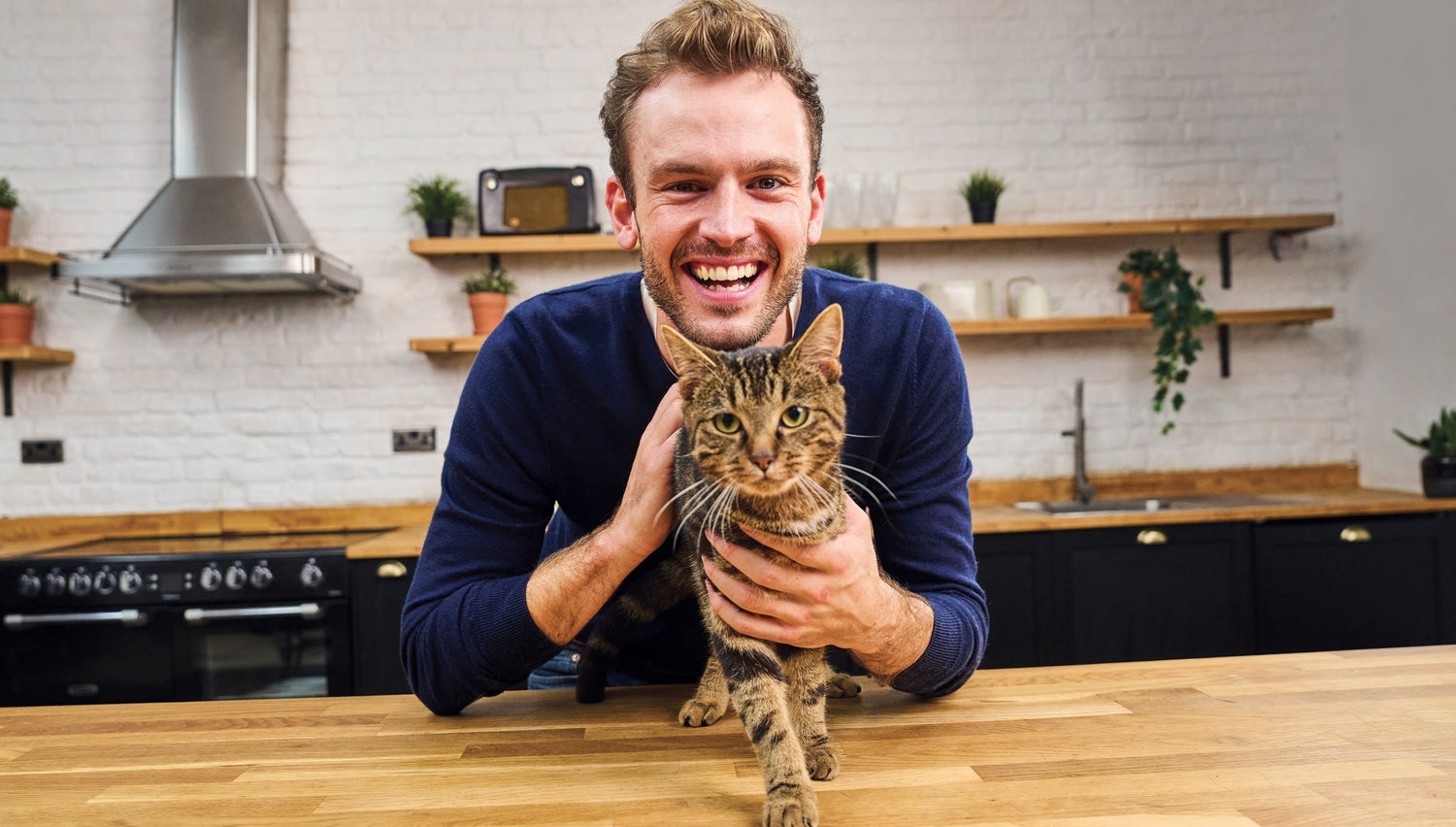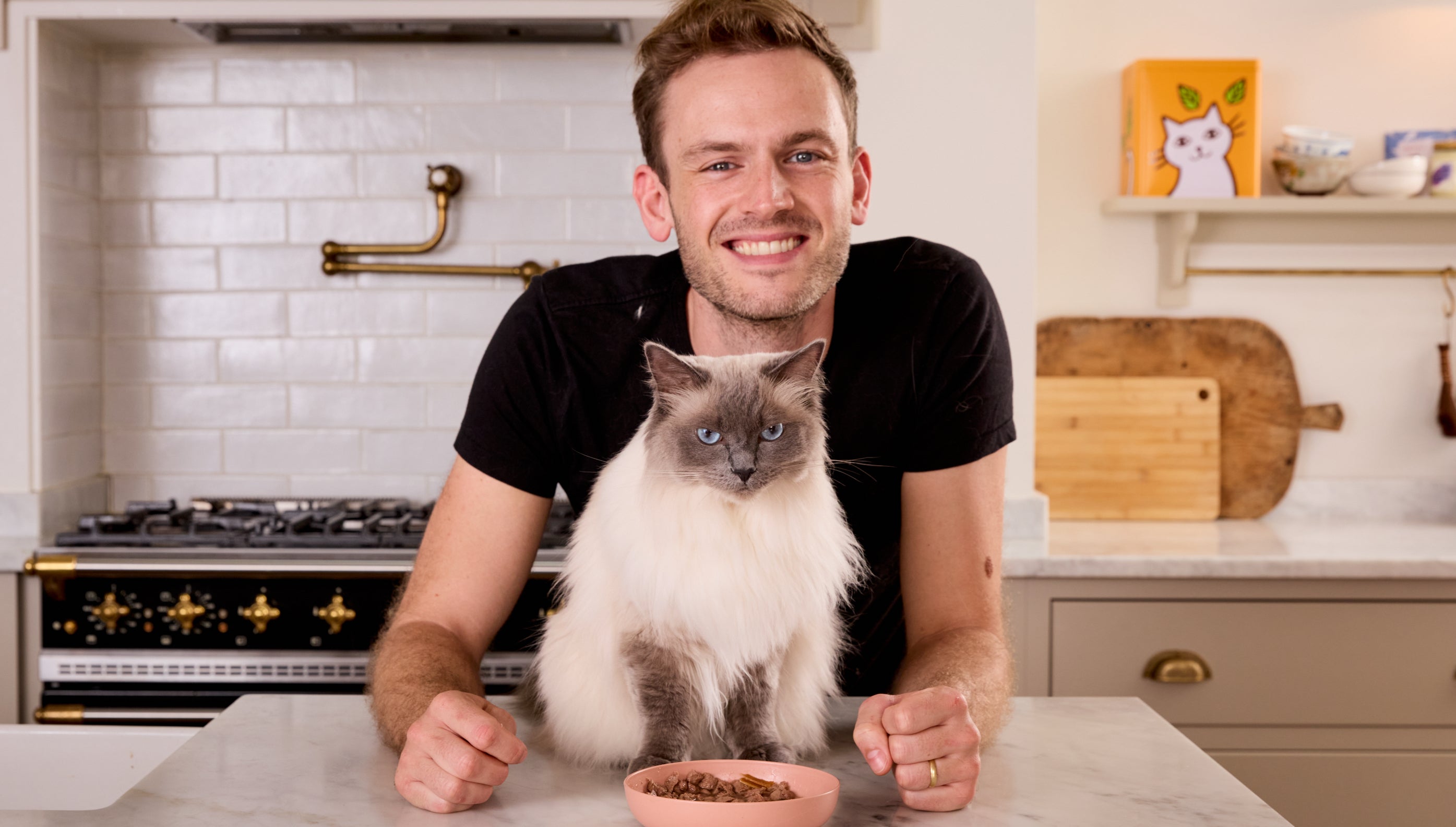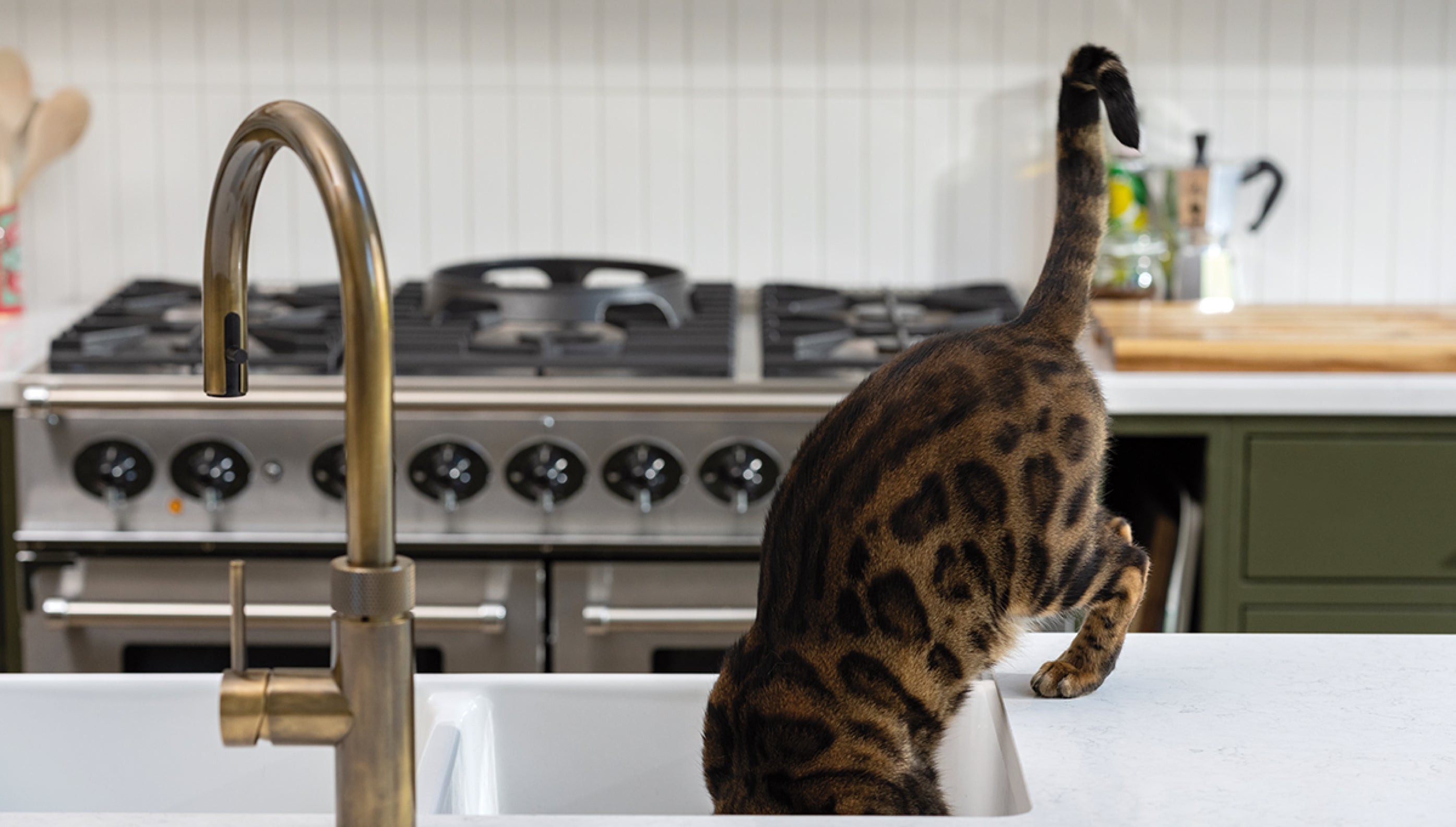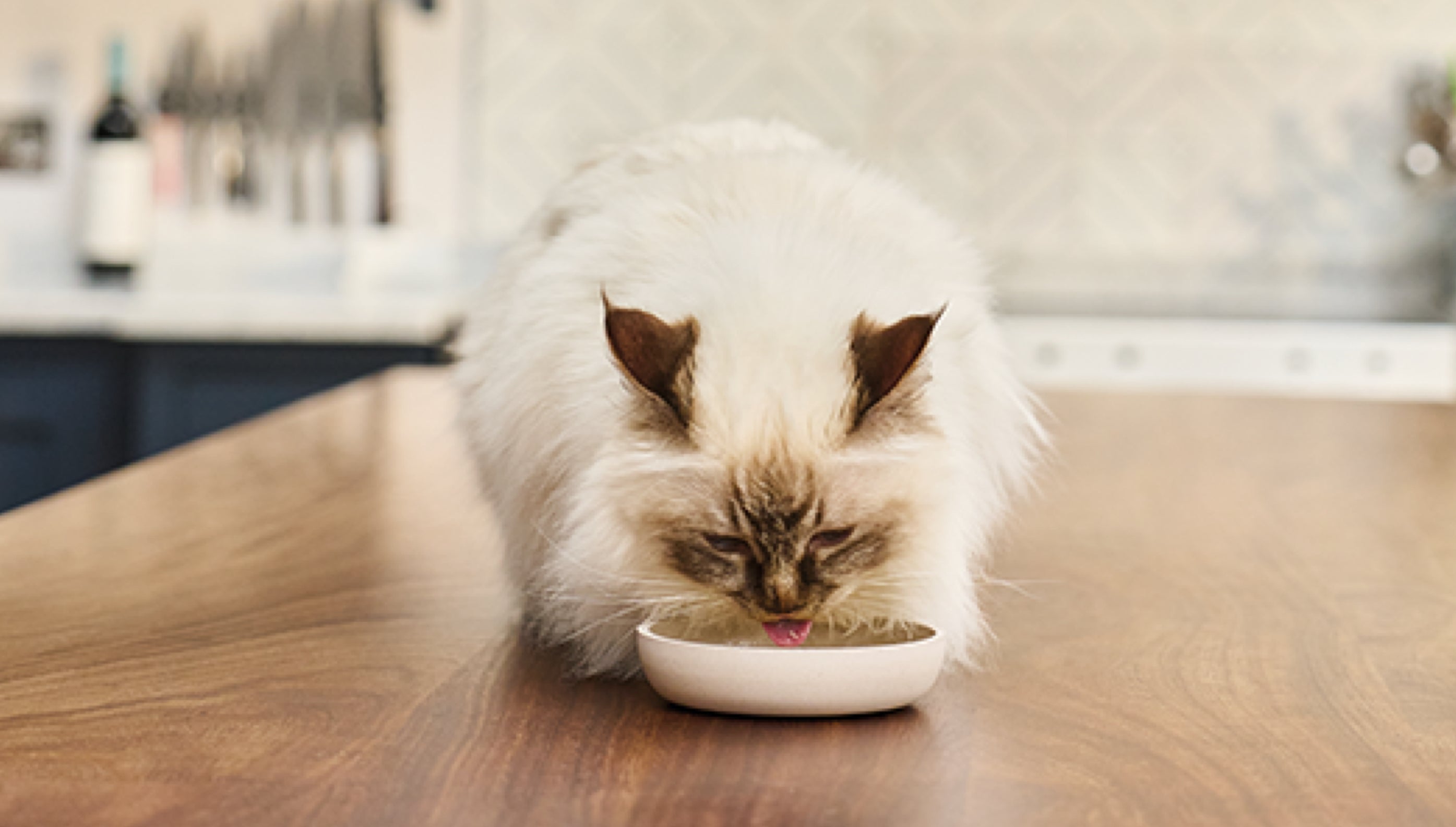When it comes to reading your cat’s body language, it might seem easy on the surface. Purring cat = happy. But cats are more complicated than that. For instance, they might seem like they want to play, but one wrong move? Game over. They might want a cuddle - but not for too long, mind you. Learning all the many ways in which your feline is communicating with you will help you to understand them, and the two of you can go on to build an even stronger, special bond. Below, I take you through the basics of cat body language, including the best ways to respond.
We asked pet expert Rory the Vet for his advice.
MEET RORY THE VET

We’ve partnered up with animal whisperer and renowned veterinarian, Dr Rory Cowlam, to share his wisdom when it comes to all things furry. And boy, does this man know his stuff.
Starting with his degree from the Royal Veterinary College, Rory has since co-starred in the CBBC’s series The Pet Factor, shared his knowledge on the likes of Blue Peter and written all about it in his book, Secret Life of a Vet.
Follow him on Instagram
Decoding the basics of cat body language
You’re likely already able to tell how your furry friend is feeling via obvious indications. But there are some key signals that can tell you even more. Cats communicate mostly through their body language. The primary indicators are their tail, ears and overall posture. From these, you can tell if your cat is in fight or flight mode, anxious, happy or chilled. Remember, context is important too. Depending on where your cat is and who they are with will provide further insight.

Reading the tail signals
- High tail: Cats position their tail high when they’re greeting someone and feeling friendly. They also do this when they are content and happy.
- Low tail: This can suggest aggression or anxiety. Consider your cat’s environment or evaluate the context to understand why they may be feeling this way. Note, certain breeds carry their tails low generally.
- Swishing tail: A tail moving side to side can mean that your cat is focused on an object and is considering pouncing on it.
- Curved tail: This indicates that they’re feeling playful. The perfect time to grab their favourite toy.

- Puffed or bristled tail: This suggests agitation, stress or fear. Cats tend to puff their tail to make themselves appear bigger and less vulnerable in moments when they feel like they’re threatened or in danger. This usually happens during a cat fight.
- Tucked away tail: They are extremely frightened. By lowering their tail beneath their body, they’re trying to make their body as small as possible in order to make themselves less of a target.
- Whipping tail: If their tail is whipping back and forth fast, this can suggest that they’re feeling aggressive or irritated.
- Wrapped around an object tail: Whether it’s your legs, a chair or another cat, this is a very loving gesture.
Ears
- Flat ears: They’re stressed.
- Twisted ears: They’re angry or listening attentively to their surroundings.
- Ears facing forward and close together: They’re interested.
- Ears held naturally: They’re relaxed.

Whiskers
Whiskers are multifunctional. Not only do they act as a sensory aid, but they also help your kitty gauge how tight a space is. And they provide great insight into your feline’s behaviour or emotion.
- Forward and fanned out: They’re interested and curious.
- Rigid and pulled around their face: They’re feeling threatened and anxious.
- Relaxed: They’re feeling happy and content.
Eyes
- Narrowed eyes: They’re happy and content.
- Dilated pupils: They’re hyped up. They could be excited or frightened. Read the rest of their body language for more of an idea.
- Slow, steady blinks: They’re content or sleepy. Mimick slow blinks back to tell your cat, “I’m friendly”. 
Vocal cues
Cats also communicate to us by using vocalisations. Although we can’t speak cat language, we can certainly get a rough idea of what they may be expressing.
- Meowing: This is done almost exclusively for us humans. It is rarely used for cat-to-cat communication, besides a kitten with their mother. Meows and their meanings can vary from cat to cat. They may meow to get your attention, to greet you, out of excitement when you reach for their favourite food, or sometimes to tell you that something’s wrong. You as their owner will be able to decipher your cat’s vocalisation over time.
- Purring: Although this is usually a sign that they are happy and content, cats have been known to purr when they are stressed, frightened or in pain. If their body language is relaxed, this would suggest that all is well.
- Growling/ hissing: They’re being aggressive. Back away and give them space.
Recognising stress and aggression
Unfortunately, there are plenty of things that can make your furry friend stressed or agitated. This could be anything from a new neighborhood cat to fireworks or a new home. Picking up on these emotions can help you to identify and alleviate the problem.
The common signs include:
- An arched back
- Flattened ears
- A bristly tail
- Hissing
- A tense body
If they are displaying any of the above, your kitty may want to hide. Evaluate the situation and give your cat plenty of space and a safe spot to do so.

How to respond to your cat’s body language
As their cat parent, it is super important you get to know all of your cat’s quirks and habits. That way you’ll be much better equipped to handle any scenario your best friend might face. And the better you understand their language, the better your relationship will be.
If you are concerned about your cat, for example, if they are showing any signs of discomfort or a change in behaviour, such as excessive meowing, consult advice from your veterinarian as soon as possible, as it could be a sign that your cat is in pain.
The information in this article is intended as a guide to help pets and pet parents on their journey together. It is provided for educational and informational purposes only and is not meant as a substitute for professional advice from a vet, behaviourist, trainer or other professional. We encourage all pet parents to consult with their vet and/or behaviourist to ensure their pet’s specific needs are met.




